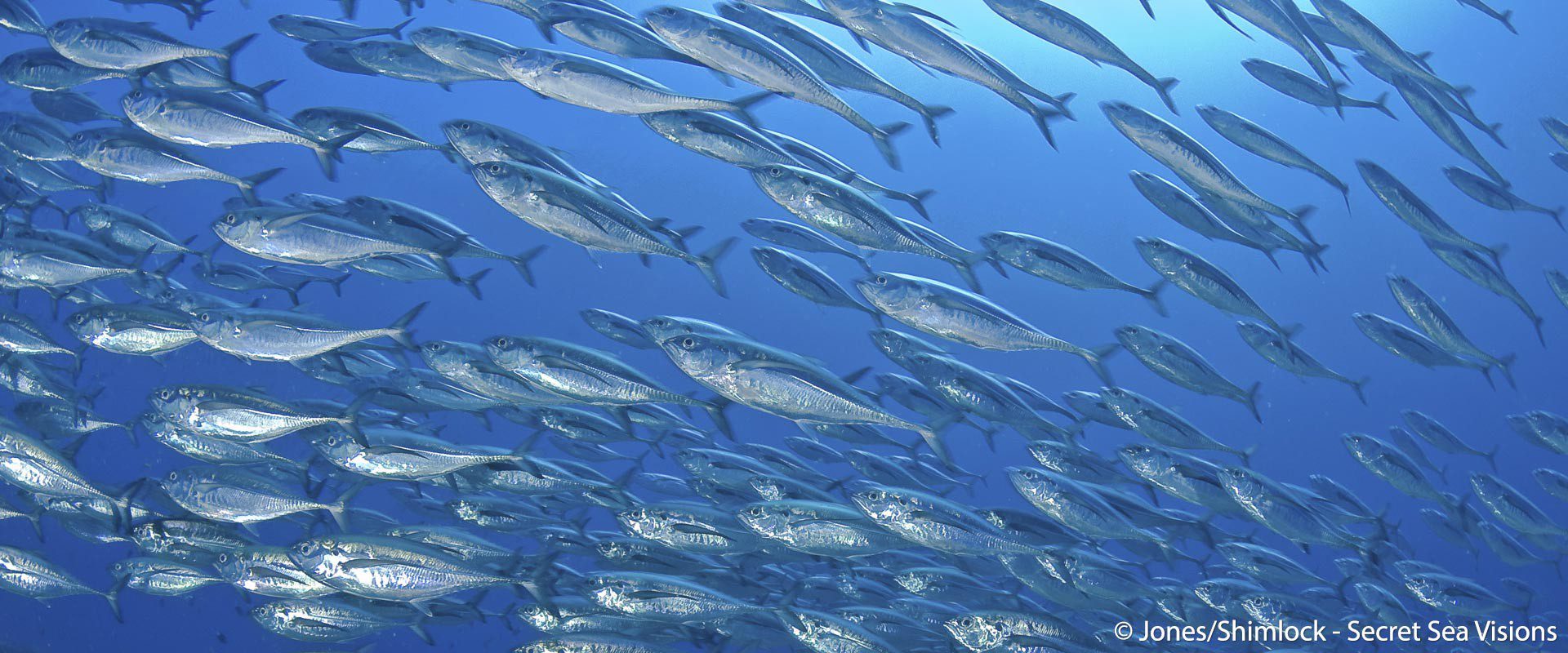Big Fish Thriving in Raja Ampat
We’ve been back a few weeks from our last Raja Ampat trip of the season a place where there are still new reefs to discover, new thrills to experience. Even though we wrote the guide to diving in R4 (“ampat” means “four” in Bahasa Indonesia), on this latest trip we dived several new (to us) sites. We concentrated mostly of on the Dampier Strait, perhaps the first area in R4 to be dived by tourists who began arriving and staying in primitive scuba camps about 15 years ago. The most amazing thing about these new sites was the fish. It’s hard to imagine what Raja’s reef were like about 10 years ago when the first tourist divers saw them, but believe it or not, there’s a lot of evidence that fish counts have risen steadily during this time.
Now I’m not talking just your usual (for R4) masses of fusiliers and surgeonfish. I’m talking a reef where hundreds of tuna flashed around making “fish thunder” (cavitation) as they were chased by meter-long Spanish Mackerel and even larger Dog Tooth Tuna. We also saw (and photographed) a type of scad (Jack family) that, according to Dr. Gerald Allen, had yet to be photographed underwater, as well as schools of barracuda, more trevally, several species of snapper, and, most surprisingly, several small black-tip and grey reef sharks. The sharks especially are very good news. The increased visibility of these top reef predators means that conservation is beginning to work in R4.
Why Raja Ampat? Why have conservation efforts been successful here? In our opinion, one major factor has been the NGO’s attempts to involve local people in their programs. Locals are involved in community patrols, an educational vessel visits every village, conducts marine biology classes for kids and puts on shows at night for all the villagers. Radio programs sponsored by the NGOs are broadcast throughout the province informing locals about pending environmental issues. There has been a huge effort to integrate traditional practices into local conservation efforts, especially in the design of zonation systems for the marine protected areas, including “no-take’ zones.
But perhaps the most important factor has been the impressive increase in tourists, almost all divers, visiting Raja Ampat. In less than a decade rather spectacular results have been achieved. Raja Ampat received less than 300 travelers who based out of 1 resort or from 1 (seasonal) liveaboard dive boat in 2001. In 2013 over 8000 tourists traveled to Raja Ampat. Again, the vast majority were scuba divers who stayed at one of the region’s 6 land-based resorts or cruised the archipelago on one of more than 40 liveaboards. About half of their entry tag fee is slated for community development projects, so an increase in tourism directly benefits the villagers, who in turn, welcome more tourists.
Even the provincial government is impressed. The Bupati (the governor) of Raja Ampat just announced that he has charged his cabinet with developing green economic initiatives, and that ecotourism will receive top priority. In fact, the Bupati said publicly that Raja Ampat will no longer give out mining licenses, and will instead focus on developing marine tourism. This is very good news. And, while some of it can be chalked up to political posturing, the Bupati has been unusually succinct about his position.
Now, this doesn’t mean that environmental degradation has been eliminated completely. There are still hundreds if not thousands of transmigrants from other Indonesian island flocking to Raja Ampat. These people need places to live, stores to buy stuff in, fish to eat and so on. Seasonal shark fishing camps still dot isolated islands outside of the archipelago’s protected areas. Most ominous, seismic surveys have been conducted around Misool and Kofiau. Oil and gas leases are nationally, not regionally awarded concessions, so the provincial government of Raja Ampat may not have control over who drills for what where. Hopefully someone in the government will have an ” aha” moment and connect the US gulf coast’s disaster to a potential environmental catastrophe in R4.
Still, if there ever was a case to demonstrate that traveling divers can help conserve an ecosystem, Raja Ampat’s first decade as one of the world’s premier dive destinations has proven what can be accomplished. Please keep diving in Raja Ampat!





































